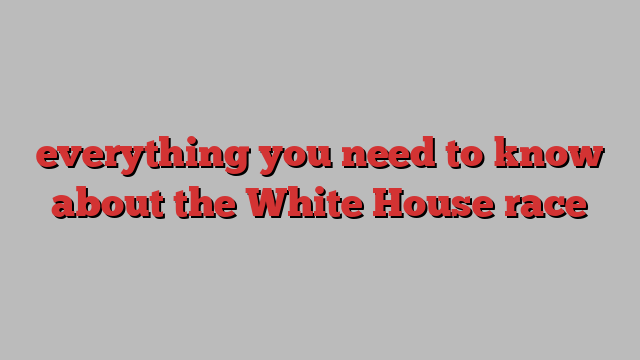
The 2024 US presidential election is already among the most dramatic in modern memory. What began as a rematch between a sitting and former US president was disrupted when Joe Biden dropped out in July and vice-president Kamala Harris replaced him on the Democratic ticket, propelling her into a head-to-head race for the White House against Donald Trump.
With mere days to go before the vote, the battle to become America’s next president is under way. As Trump and Harris attempt to win over voters on everything from trade and immigration to abortion, manufacturing and even foreign policy, polls show no clear advantage for either candidate.
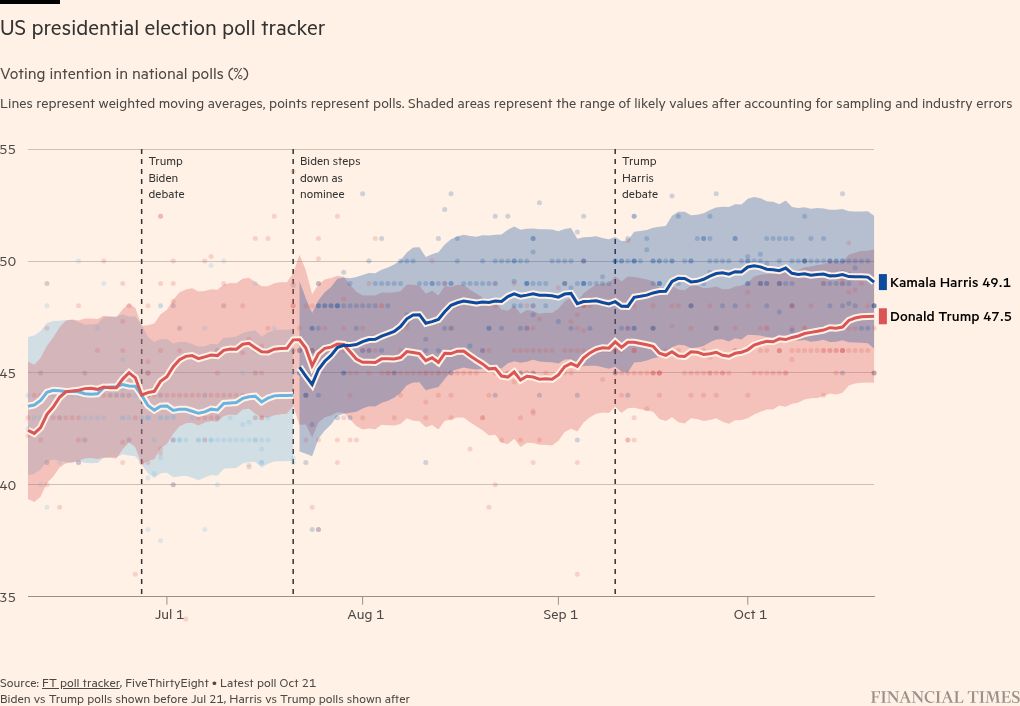
The election result will depend on seven swing states — Arizona, Georgia., Michigan, Nevada, North Carolina, Pennsylvania, and Wisconsin. Accordingly, Trump and Harris are spending hundreds of millions of dollars courting voters in these pivotal battlegrounds.
Ahead of the November 5 vote, here is everything you need to know about the candidates, their platforms and allies, and the gears that drive the US election system.
The candidates

Harris’s nomination has revitalised her party and set an already tumultuous election on a new trajectory. Since she launched her campaign in July, the vice-president has erased Trump’s polling lead over Biden, secured the backing of several unions, and attracted a number of big celebrity endorsements.
Trump, meanwhile, has strong support from his base and broad appeal on issues like immigration and the economy, as well as financial support from billionaires such as Elon Musk and Bill Ackman.
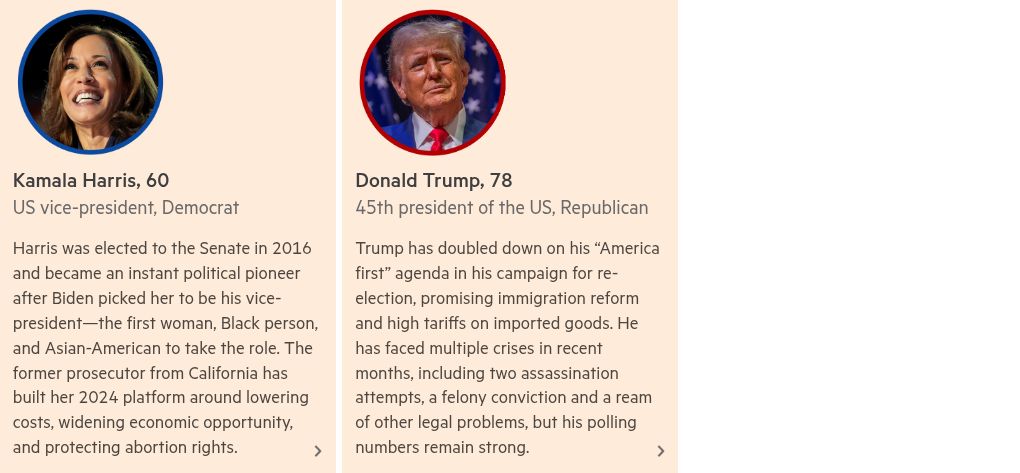
Multiple third-party candidates, including Cornel West and Jill Stein, are also running for president. None commands more than single-digit support in the polls, but in an extremely tight race, the votes they win could still be influential.
Essential reading on the candidates
The electoral college
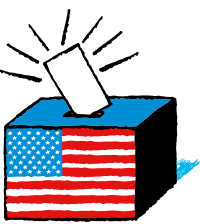
The US has a unique election system for the president called the Electoral College, in which 538 officials representing each of the 50 states and Washington, DC convene to elect the president a few weeks after the popular vote.
Most Electoral College votes remain constant over the years, so each election ends up being fought and won in a handful of so-called “swing states”, where the vote often switches between the parties.
The path to 270
Millions of Americans will vote in November to choose the next US president, but the outcome of the race will come down to just 92 Electoral College votes.
That’s the number of delegates whose votes could still swing either way, depending on the result of the popular ballot in seven key states.

A further 31 Electoral College voters hail from states that are considered toss-ups, where the margins between the candidates are close.
You can track each nominee’s possible path to the White House using the Financial Times interactive poll tracker.
The swing states
Seven states are expected to decide the 2024 presidential election. The other 43 and Washington, DC, lean strongly towards one party or another and are considered non-competitive.
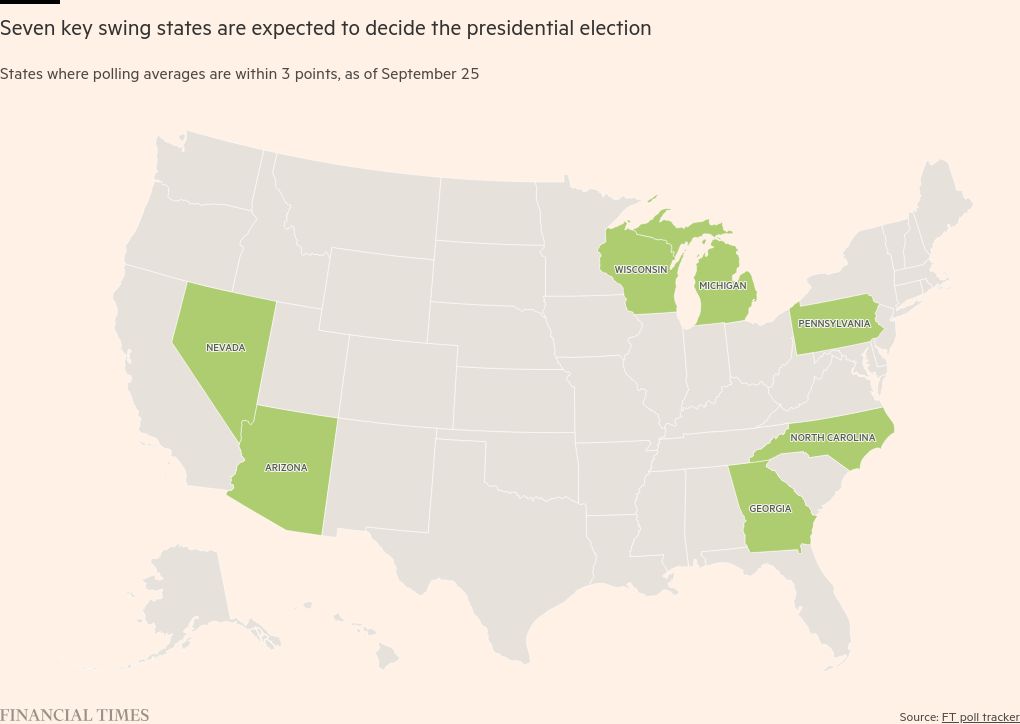
Candidates focus on issues that matter most to voters in the swing states and spend more money and time in these pivotal battlegrounds. This election, Trump and Harris have concentrated their advertising and campaign efforts on Pennsylvania, Michigan, Wisconsin, Georgia, North Carolina, Arizona and Nevada.
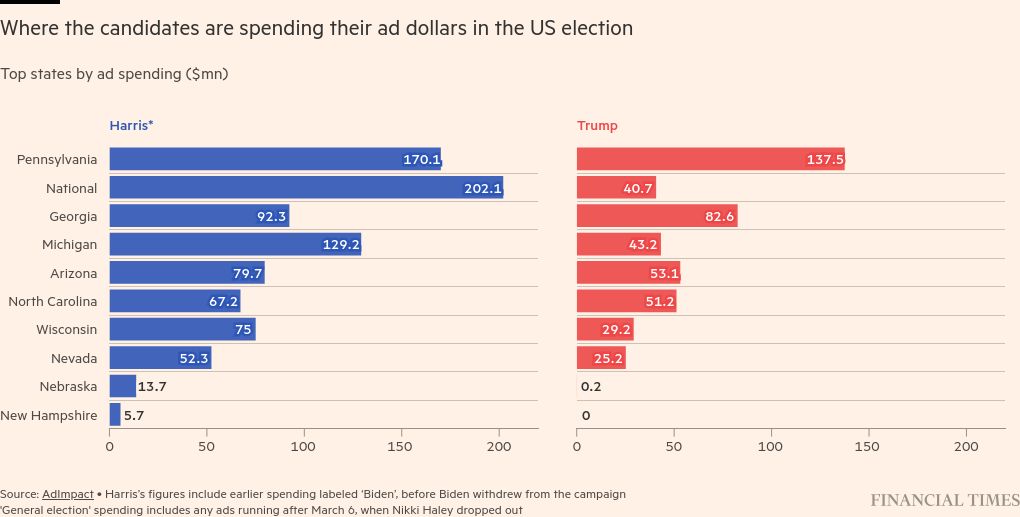
Essential reading on the Electoral College and swing states
The policies
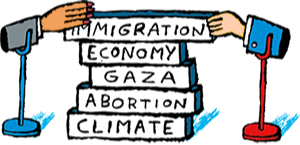
Inflation, immigration, abortion, and foreign policy are among the most salient issues for voters in this election.
Harris and Trump have mostly battled over the economy, and the Republican candidate has painted a picture of “mayhem and misery” under the current administration. Blaming the White House for the country’s cost of living crisis has been an effective strategy for Trump, although, by some measures, Harris has gained a narrow advantage on the issue. A recent FT-Michigan Ross poll showed 44 per cent of Americans trusted the vice-president with the economy, compared to 42 per cent that said they favoured the former president.
The FT-Michigan Ross poll is a partnership between the Financial Times and the University of Michigan’s Ross School of Business. Discover more here.
Harris’s policies
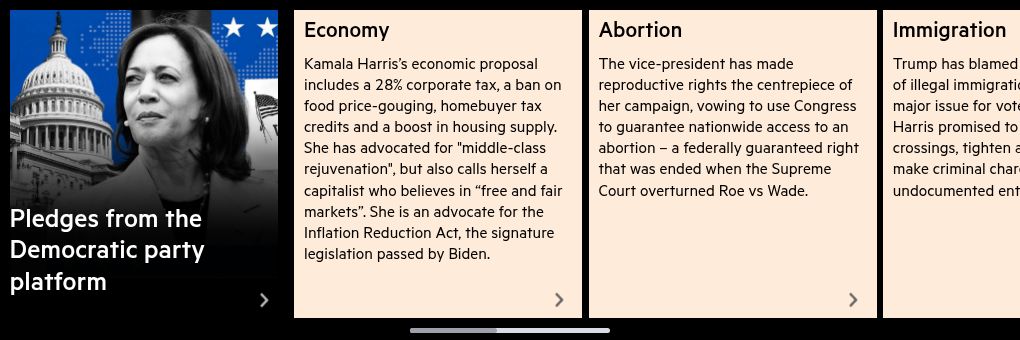
Unlike in many European election systems, US candidates do not publish official manifestos. Historically, each party puts forth concise but fairly abstract policy proposals, outlining their general plans for office. This election is especially light on detailed proposals. Harris has pitched an “opportunity economy” focused on middle-class voters. Another main pitch is on defending women’s reproductive rights. Increasingly, she has focused her campaign on a contrast with Trump and his character, what she says is the “extremism” of his social and economic agenda, and on his denial of the 2020 election he lost. “We’re not going back,” has become one of her slogans.
Trump’s policies
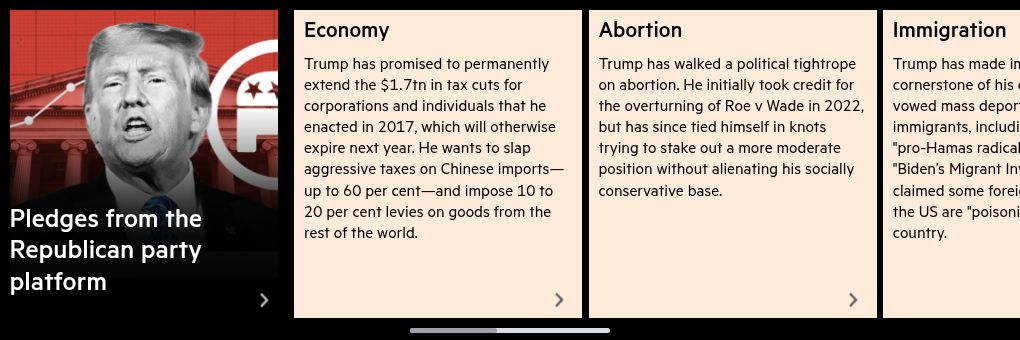
The Republican party’s 2024 party platform sets out a 20-point plan for revitalising the US economy, strengthening US borders and halting what it calls “American decline”.
Trump has put forth a populist economic agenda that claims to protect the interests of working-class Americans and secure domestic manufacturing jobs by penalising companies that move operations abroad.
Project 2025 has been a recurring issue, though one from which the former president has formally distanced himself. The controversial “mandate for leadership” — a right-wing policy proposal for a second Republican term written and paid for by The Heritage Foundation think-tank — promises to ‘overhaul’ the US government should Trump win. Its policy proposals include criminalising porn, stricter anti-abortion measures, and a dramatic expansion of the executive branch’s powers.
Essential reading on policy
Campaign funding

Winning the White House is costly. Between 2000 and 2020, US presidential candidates collectively spent $16.8bn on their election campaigns, topping out at $6.4bn in 2020.
Both 2024 candidates are expected to exceed 2020 spending and have raised exceedingly large sums to fund their expenditures. Vice-president Harris saw a surge in donations after replacing Biden as the presumptive Democratic nominee and assuming much of his campaign funding. She accumulated more than $300mn in July alone, compared to Republican nominee Trump’s $139mn over the same period. Harris groups have commanded $971mn since the start of Q3, while Trump has secured $894mn since January 2023, according to FT analysis of the latest federal filings.
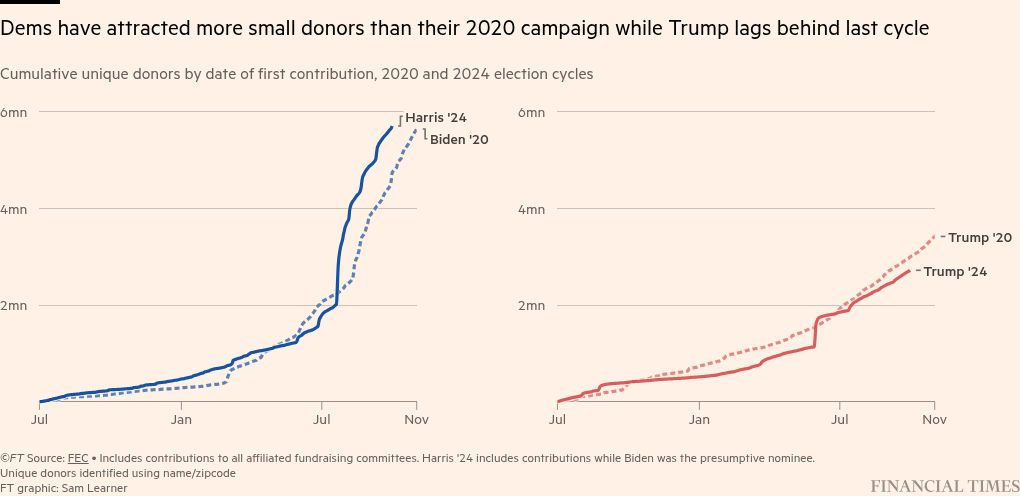
Money is critical to US presidential elections but does not always guarantee victory. Hillary Clinton raised nearly $1bn in the 2016 election cycle, almost double Trump’s haul of $533mn, but ultimately lost at the ballot box.
Pacs and super Pacs
Official campaign fundraising data is just one piece of a much larger financial puzzle. Individual donations are capped by law at $3,300 per candidate per election, but nominees and hopefuls can count on support from other fundraising groups known as political action committees, or Pacs.
A Pac might support a candidate or cause and can raise up to $5,000 per person each year, but generally can’t accept money from unions or companies — although companies and unions can form their own Pacs.
Then there are groups known as super Pacs, which can accept unlimited donations from individuals or corporations. Although super Pacs can support or advocate for a candidate or cause, unlike a Pac they cannot directly contribute to or co-ordinate with candidates.
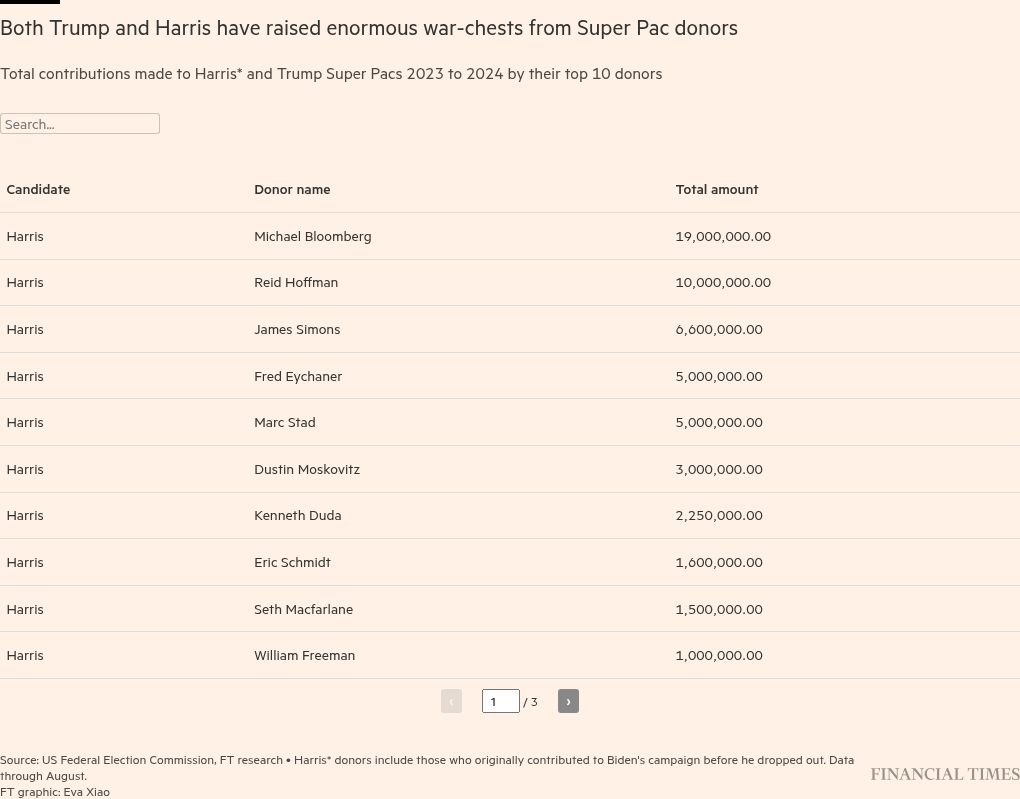
Super Pac coffers are filled mainly by billionaire donors. For Democrats, this includes the likes of Netflix’s Reed Hastings, LinkedIn founder Reid Hoffman and Hollywood mogul Jeffrey Katzenberg. Republican-aligned super Pacs have received funding from Elon Musk, Citadel’s Ken Griffin, and Blackstone’s Stephen Schwarzman, among others.
Campaign spending
Most of the money raised through fundraising and Pacs goes towards campaign advertising in the swing states.
Despite spending significantly more on ads this election cycle than the last, candidates are targeting fewer regions, choosing to concentrate their efforts on the states that could make the most significant difference to their campaigns.
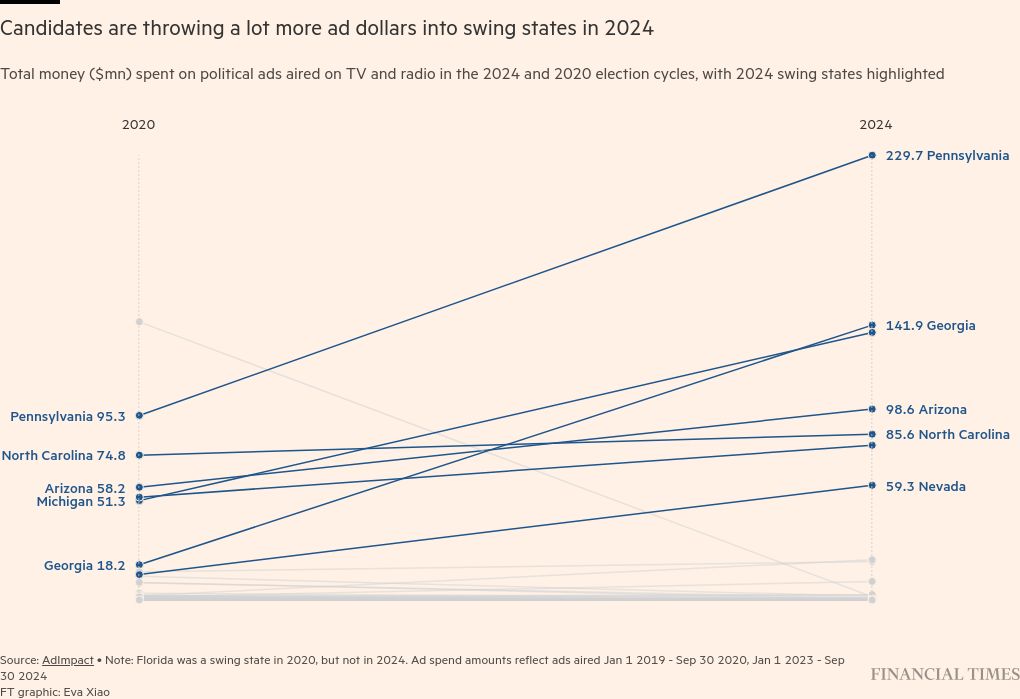
Essential reads on campaign finances
The power players
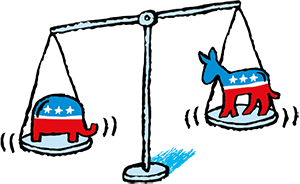
Harris’s allies include a star-studded cast of political heavyweights, while Trump’s 2024 team reflects a Republican party that has been remade in the former president’s image in recent years.
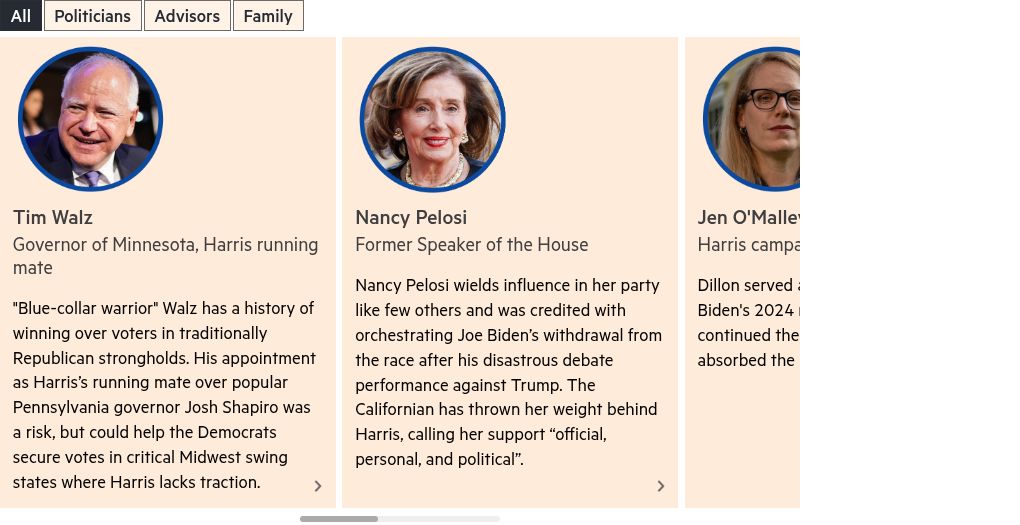
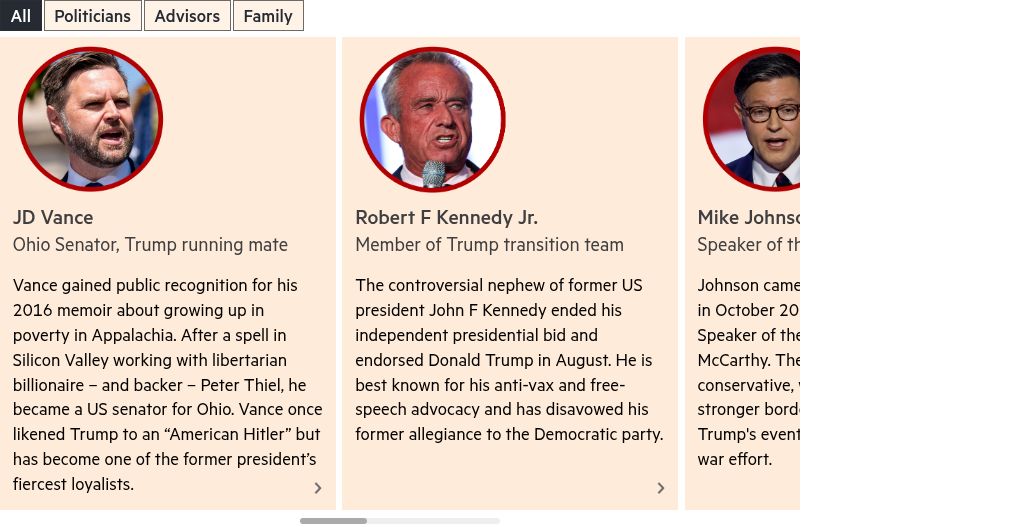
As well as choosing a new president, Americans will be electing members of Congress when they vote in November. You can find more about all the US elections this year, as well as our award-winning analysis on US politics, here.
Essential reading on the power players
Additional reporting by Connor Cohen in London